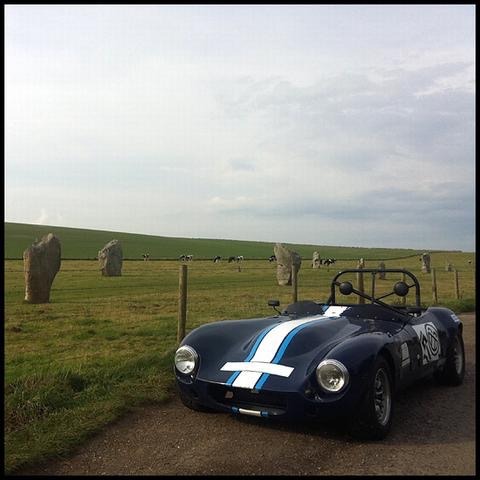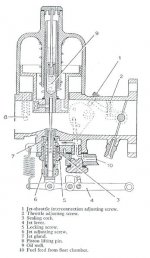Right, so many competantly-designed cars sound the sam^^^^ fail in similar manners. I note none of the cars mentioned appear to be ABX tested.
... oh never mind. Dragging this back on-topic vaguely, might I just suggest that for specific purposes DIY can allow for ...more fun?

-940lbs fuelled and running; there are times noone wants massive milled casework.
... oh never mind. Dragging this back on-topic vaguely, might I just suggest that for specific purposes DIY can allow for ...more fun?

-940lbs fuelled and running; there are times noone wants massive milled casework.
Last edited:
What did they do with the dog and the white cane?
I'm afraid I can't tell you on a forum that considers the word "crap" to be obscene.
se
Pretty young girls like sports cars. I understand, SE.
Yeah, I'm going to have to get myself another one.

se
I once owned a 65 Austin Healey Sprite. .
I was just at a party where the owner had to move his perfectly restored Austin Healey and 1959 XKE out of the garage to make room for the caterer's truck. The Jag is on a list for film producers due to its rare black interior. To me only the tan interior and BRG paint will do.
I hope that guy has a mechanic on staff, those Jaguars are in the shop more than out. I had a later model XJ6 and it was a PITA. Can't remember how many times I had to fix my brother-in-laws Jensen Healey with the Ford Cosworth engine. Nice little sports car but a pain in the rear to keep the exhaust from cracking!
Hah! Nothing like putty goo - been getting a car through rego year after year by slapping on a good wad of the stuff at the right time,Nice little sports car but a pain in the rear to keep the exhaust from cracking!
I was just at a party where the owner had to move his perfectly restored Austin Healey and 1959 XKE out of the garage to make room for the caterer's truck. The Jag is on a list for film producers due to its rare black interior. To me only the tan interior and BRG paint will do.
I thought tan interior on a Jag was like Henry Fords black on a T.
I hope that guy has a mechanic on staff, those Jaguars are in the shop more than out. I had a later model XJ6 and it was a PITA. Can't remember how many times I had to fix my brother-in-laws Jensen Healey with the Ford Cosworth engine. Nice little sports car but a pain in the rear to keep the exhaust from cracking!
In this case Bybees of money are available.
I assume nobody uses an XKE of any vintage as a primary means of transportation! The V12 was a nightmare to keep in tune from what I understand. The straight 6 was much more reliable but you could practically schedule the head removal for rework as it would blow out the gaskets and warp on a regular schedule, that is for the aluminum head on a cast iron block anyway.
I assume nobody uses an XKE of any vintage as a primary means of transportation! The V12 was a nightmare to keep in tune from what I understand.
Jim Williams gave a talk on this at the ISSCC. An ancient mechanic gave him the secret sauce. You need to modify the viscosity of the damping fluid on the SU carbs according to "feel".
These cars are collectables his work ride is a yellow SLK.
Scott,
You wouldn't believe the amount of times I asked someone with one of those old British cars when they were running rough when they last checked the damping fluid in the carbs and they looked at me funny! Oil in the carburater, they though I was nuts. Much easier on a Holley carb, just make sure the power valve diaphragm wasn't broken and the fuel levels were set and they would run.
You wouldn't believe the amount of times I asked someone with one of those old British cars when they were running rough when they last checked the damping fluid in the carbs and they looked at me funny! Oil in the carburater, they though I was nuts. Much easier on a Holley carb, just make sure the power valve diaphragm wasn't broken and the fuel levels were set and they would run.
An ancient mechanic gave him the secret sauce. You need to modify the viscosity of the damping fluid on the SU carbs according to "feel".
when they were running rough when they last checked the damping fluid in the carbs and they looked at me funny! Oil in the carburater, they though I was nuts.
SU Carburetters Introduction
Most S.U. carburetters incorporate a piston damper, the function of which is to restrict the speed of lift of the piston on snap throttle openings, and to allow the piston to fall at its normal speed on throttle closure. This one way damping is obtained by means of a non-return valve situated at the base of the damper.
When the speed of piston lift is retarded an additional air depression is put on the fuel in the jet resulting in an increase in the quantity of fuel discharged. A richer mixture is thus obtained until the piston resumes its position of equilibrium. This enrichment is necessary to provide satisfactory pick-up. The piston damper also improves cold starting and driveability from cold.
….
After the carburetters have been correctly set it is necessary to check that the oil damper reservoir in the piston rod has sufficient oil. This operation should, in any case, be carried out periodically at about every three months, and it is usual to use an oil of grade SAE 20 (it should be no thicker than SAE 30). The operation is not a critical one; simply unscrew the damper unit and pour oil into the hollow piston rod until it is within t in. from the top of the rod.
...
Suction Chamber Oil
We sell two different types of oil for this purpose which are still made to the original SU factory specifications.
The first is SU Damper Oil, which is a straight 20 grade and comes in a handy 125ml bottle. This oil is for use where the carburetter is fitted with a damper inside the piston and can be used on all SU, Zenith and CD carburetters.
SU Damper Oil (125ml), Part No: BDR125S
The second type is SU Dashpot Oil, which is for use in earlier, pre-war, SU carburetters where no damper is used. In the case of carburetters fitted with dampers the oil should be filled to a level just below the top of the hollow piston rod, so that when the damper is fitted it does not displace the oil any higher than the top of the piston.
SU Dashpot Oil (125ml), Part No: BDP125S
George
Attachments
Last edited:
The V12 was a nightmare to keep in tune from what I understand.
An XJ5.3 in the mid '70s, Series II, required a complete dual-exhaust system exchange every two years (>30k annual mileage).
Complicated animal, in present value, cost about half a Prius Hybrid.
John,
On mufti-carburetor engines it requires a set of manometers to measure the pressure drop across the individual carbs to balance air flow and idle air mixture. This is done everyday on most four cylinder motorcycles and isn't that big a deal. Most of the older English cars such as an MG or Triumph only had a single down draft or side draft carburetor. The problem with most of those old English engines was more likely that they leaked like crazy, oil came out of so many places, and they definitely weren't made to handle the heat here in the USA, the radiators were just to small for anything that would stress the cooling system. Now setting the valve clearance on one of those Jaguars was another issue all together, another pita with fixed shims that required very careful measurement and a big assortment of parts. Yes I have done it, not any fun.
On mufti-carburetor engines it requires a set of manometers to measure the pressure drop across the individual carbs to balance air flow and idle air mixture. This is done everyday on most four cylinder motorcycles and isn't that big a deal. Most of the older English cars such as an MG or Triumph only had a single down draft or side draft carburetor. The problem with most of those old English engines was more likely that they leaked like crazy, oil came out of so many places, and they definitely weren't made to handle the heat here in the USA, the radiators were just to small for anything that would stress the cooling system. Now setting the valve clearance on one of those Jaguars was another issue all together, another pita with fixed shims that required very careful measurement and a big assortment of parts. Yes I have done it, not any fun.
I used to do the servicing on the family AM DB5....none of the above fluid leakage problems, though cooling was an issue.
Triple SU carbs....once setup correctly they never gave an ounce of trouble and remained stable very long term.
SU carbs suffer wear badly...the moving piston and metering needle incur wear that causes binding and non return to idle.
Yes, the dashpot oil is very important to driveability....IIRC I used Dexon II auto trans fluid.
Dan.
Triple SU carbs....once setup correctly they never gave an ounce of trouble and remained stable very long term.
SU carbs suffer wear badly...the moving piston and metering needle incur wear that causes binding and non return to idle.
Yes, the dashpot oil is very important to driveability....IIRC I used Dexon II auto trans fluid.
Dan.
No wonder there ended up being a huge market for MCU's and sensors in auto. I cannot imagine having fiddle with carbs every few months. The last experience I had of a manually adjusted carb was on my Alfa Gulietta in the early 1980's. Fantastic after a service, with loads of punch, but after about 2 weeks it was noticeably flatter. After that, all the cars I owned had engine management systems.
- Status
- Not open for further replies.
- Home
- Member Areas
- The Lounge
- John Curl's Blowtorch preamplifier part II
